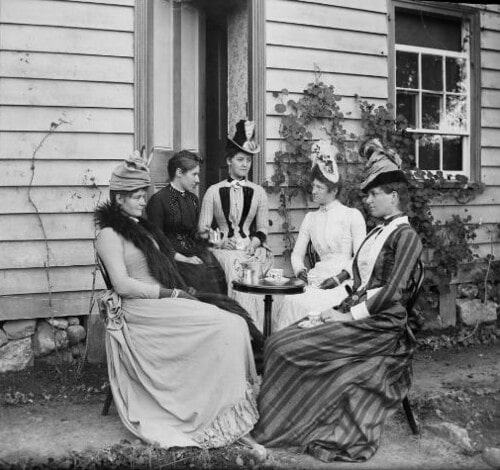Plot and Storyline
Middlemarch, published in 1871–1872, is a Victorian novel by George Eliot that explores the lives of individuals in the fictional town of Middlemarch. The novel weaves together multiple storylines and characters, offering a panoramic view of a society undergoing social and political changes.
At its core, Middlemarch follows the story of Dorothea Brooke, an intelligent and idealistic young woman who marries the elderly scholar Edward Casaubon, hoping to assist him in his intellectual pursuits. However, Dorothea soon realizes that her marriage lacks the intellectual and emotional fulfillment she had hoped for.
Meanwhile, Tertius Lydgate, a young and ambitious doctor, arrives in Middlemarch with aspirations to bring modern medical practices to the town. He falls in love and marries Rosamond Vincy, a beautiful but vain and shallow woman. As Lydgate’s career faces challenges and financial difficulties arise, their marriage becomes strained.
The novel also delves into the lives of other characters, such as Fred Vincy, a young man struggling to find his purpose, and Mary Garth, a sensible and independent woman who becomes a source of support and guidance for those around her.
Throughout the narrative, Eliot masterfully intertwines these individual stories, highlighting the complexities of human relationships, the consequences of choices, and the pursuit of personal and societal fulfillment.
Characters
Middlemarch boasts a rich and diverse cast of characters, each with their own desires, flaws, and aspirations. Dorothea Brooke, the novel’s central character, undergoes a profound transformation as she grapples with the limitations society places on women and her own search for meaning. Her intelligence, idealism, and unwavering commitment to her principles make her a compelling and relatable protagonist.
Edward Casaubon, Dorothea’s husband, represents the intellectual stagnation and isolation that can arise when one becomes trapped in their own ego and scholarly pursuits. His strained relationship with Dorothea reflects the limitations of a loveless and unfulfilling marriage.
Tertius Lydgate embodies the struggle between personal ambition and societal expectations. His desire to advance medical science clashes with the conservative views of Middlemarch, and he faces numerous obstacles in his pursuit of professional success and personal happiness.
Rosamond Vincy, Lydgate’s wife, represents the pitfalls of societal expectations and the consequences of superficiality. Her obsession with social status and material wealth puts a strain on her marriage and hinders her ability to find genuine fulfillment.
Themes and Symbols
Middlemarch explores a wide range of themes that continue to resonate with readers today. One prominent theme is the search for meaning and fulfillment in a society that often imposes constraints and limitations on individuals. Dorothea’s quest for a purposeful life and her struggle against societal conventions symbolize the universal human longing for significance.
Another theme is the complex nature of marriage and relationships. The novel portrays both successful and failed marriages, highlighting the importance of mutual understanding, compatibility, and shared values in fostering a healthy and fulfilling partnership.
Eliot also delves into themes of ambition, social class, and gender roles. Characters like Lydgate and Dorothea challenge societal expectations and confront the consequences of deviating from established norms. The novel raises questions about the limitations imposed by class and gender and explores the possibilities for personal growth and self-realization.
Writing Style
George Eliot’s writing style in Middlemarch is characterized by its depth, nuance, and psychological insight. She employs rich and detailed descriptions, capturing the nuances of human emotions and the complexities of interpersonal relationships. Eliot’s prose is eloquent and evocative, immersing the reader in the world of Middlemarch.
The author’s use of omniscient narration allows for a comprehensive exploration of the characters’ inner lives, thoughts, and motivations. Through her skillful use of free indirect discourse, Eliot seamlessly blends her voice with the characters’ perspectives, offering a multi-dimensional portrayal of their experiences and dilemmas.
Setting and Atmosphere
Early 19th-century England is the setting for Middlemarch, a time of significant social, economic, and political change. The novel vividly captures the atmosphere of the era, painting a picture of a society in transition.
The setting of Middlemarch serves as a microcosm of Victorian England, reflecting the tensions between tradition and progress, and the clash between conservative values and emerging ideas. The town’s insular nature and close-knit community contribute to the sense of social expectations and the challenges faced by individuals striving for personal growth and fulfillment.
Historical, Social, or Political Context
Middlemarch was written during a time of significant social and political change in England. The novel reflects the influence of the Victorian era, with its emphasis on morality, social hierarchy, and gender roles. It explores the impact of these societal normson individuals and the limitations they impose on personal freedom and fulfillment.
Eliot also touches on broader historical and political events of the time, such as the Reform Act of 1832, which aimed to expand voting rights and reshape the political landscape. The novel portrays the tensions between conservative and progressive forces within society, highlighting the challenges faced by those seeking social and political reform.
Impact and Reception
Since its publication, Middlemarch has been widely regarded as one of the greatest English novels ever written. It has had a profound impact on literature, influencing generations of writers with its insightful characterizations, complex narrative structure, and exploration of social themes.
Critics and readers alike have praised Eliot’s ability to capture the intricacies of human nature and the complexities of societal norms. The novel’s nuanced portrayal of its characters and its exploration of universal themes have resonated with readers across time and continue to do so.
Middlemarch has received numerous accolades and recognition for its literary merit. It has been included in lists of the greatest novels of all time and has been celebrated for its realistic depiction of Victorian society and its enduring relevance.
How does Middlemarch reflect the social and political changes of the Victorian era?
Final Conclusions
Middlemarch is a masterpiece of Victorian literature, offering a rich tapestry of characters, themes, and social commentary. George Eliot’s insightful exploration of human nature, personal aspirations, and the constraints of society continues to captivate readers. Through its vivid setting, complex characters, and profound themes, Middlemarch invites us to reflect on our own desires, choices, and the pursuit of a meaningful life. As readers delve into its pages, they are transported to the world of Middlemarch, where the struggles and triumphs of its characters resonate with their own experiences, leaving a lasting impact on their literary journey.
Middlemarch, written during the Victorian era, vividly reflects the social and political changes of the time, providing a nuanced portrayal of the tensions and transformations occurring in English society. Here are some key ways in which the novel captures the social and political context of the Victorian era:
1. Social Class and Mobility: Middlemarch explores the rigid social hierarchy and the challenges faced by individuals seeking upward mobility. Characters like Fred Vincy and Tertius Lydgate aspire to improve their social standing through education and professional success. The novel highlights the barriers and prejudices they encounter, shedding light on the limited opportunities available to those outside the upper echelons of society.
2. Gender Roles and Women’s Rights: Middlemarch offers a critique of the restrictive gender roles imposed on women during the Victorian era. Dorothea Brooke’s character embodies the struggle of educated and ambitious women to find avenues for self-realization and purpose beyond traditional domestic roles. The novel explores the limitations placed on women’s agency and the societal expectations that hinder their personal and intellectual growth.
3. Marriages and Relationships: The institution of marriage is a central theme in Middlemarch. The novel portrays both successful and failed marriages, providing a glimpse into the complexities of Victorian marital dynamics. It exposes the social and economic considerations that often dictated marriage choices, highlighting the lack of agency experienced by women in selecting their partners. Additionally, the portrayal of unhappy marriages, such as Dorothea’s with Edward Casaubon and Lydgate’s with Rosamond Vincy, challenges the idealized image of marital bliss prevalent during the era.
4. Religion and Morality: Religious and moral values had a significant impact on Victorian society, and Middlemarch exhibits this influence. The character of Mr. Casaubon embodies the intellectual and moral stagnation often associated with religious orthodoxy. His pursuit of a monumental but ultimately futile scholarly work reflects the tension between traditional religious beliefs and emerging intellectual currents challenging established dogmas.
5. Political Reform and Social Change: The Reform Act of 1832, which expanded voting rights and reshaped the political landscape, serves as a backdrop to Middlemarch. The novel explores the tensions between conservative and progressive forces within society. It touches upon the debates surrounding political reform, the aspirations of the emerging middle class, and the resistance to change from the entrenched elites. These broader political themes are interwoven with the personal stories of the characters, emphasizing the influence of the political climate on individual lives.
Through its multi-dimensional characters and intricate plotlines, Middlemarch provides a panoramic view of Victorian society, exploring the conflicts, contradictions, and aspirations of its time. By examining the impact of social and political changes on individual lives, George Eliot offers a profound reflection on the complexities of Victorian society and the challenges faced by individuals navigating its shifting landscape.
Sources:
Middlemarch | Summary, Characters, Analysis, & Facts | Britannica
Revisiting the Genius of Middlemarch ‹ Literary Hub (lithub.com)






